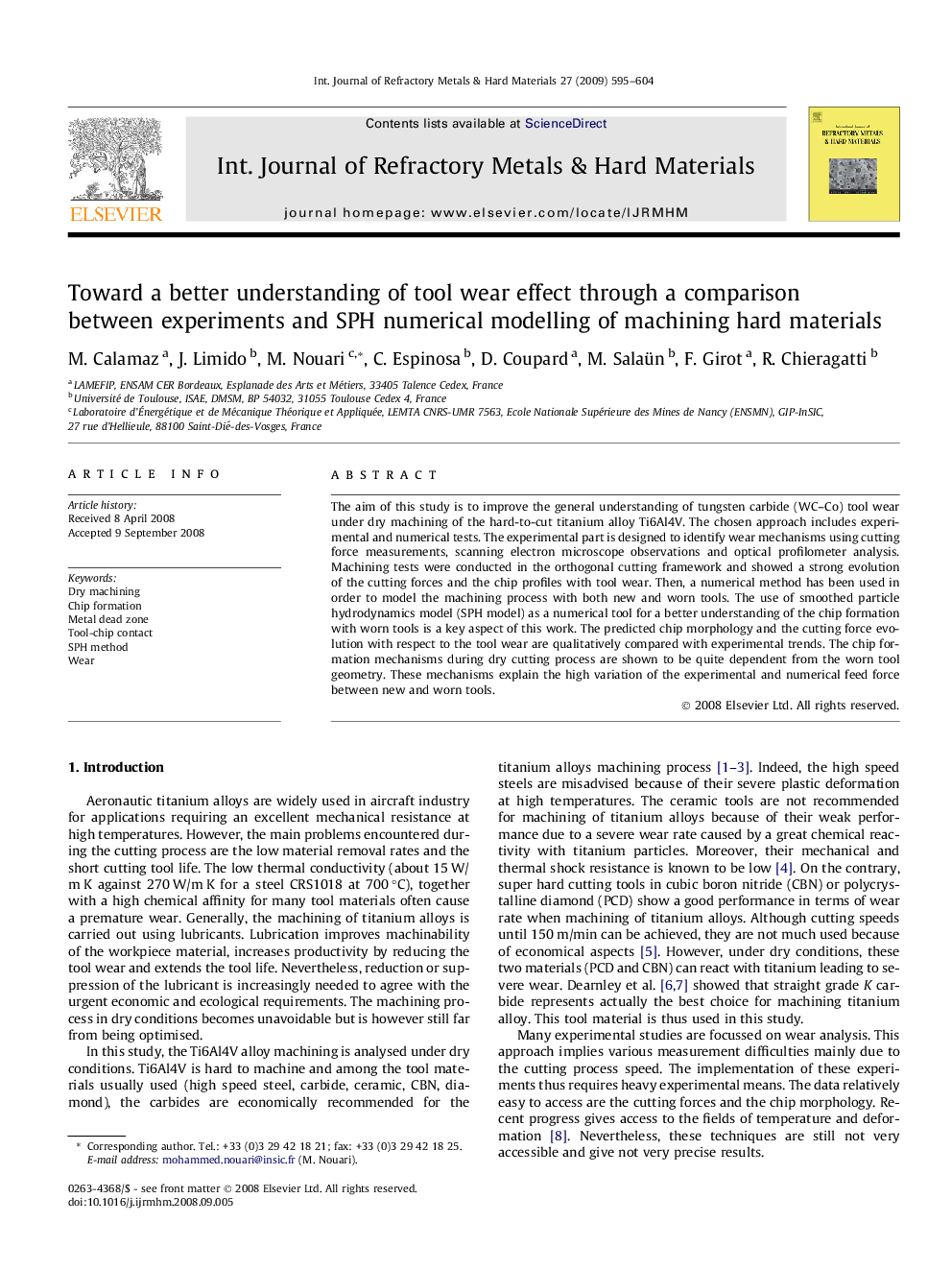| Article ID | Journal | Published Year | Pages | File Type |
|---|---|---|---|---|
| 1604239 | International Journal of Refractory Metals and Hard Materials | 2009 | 10 Pages |
Abstract
The aim of this study is to improve the general understanding of tungsten carbide (WC-Co) tool wear under dry machining of the hard-to-cut titanium alloy Ti6Al4V. The chosen approach includes experimental and numerical tests. The experimental part is designed to identify wear mechanisms using cutting force measurements, scanning electron microscope observations and optical profilometer analysis. Machining tests were conducted in the orthogonal cutting framework and showed a strong evolution of the cutting forces and the chip profiles with tool wear. Then, a numerical method has been used in order to model the machining process with both new and worn tools. The use of smoothed particle hydrodynamics model (SPH model) as a numerical tool for a better understanding of the chip formation with worn tools is a key aspect of this work. The predicted chip morphology and the cutting force evolution with respect to the tool wear are qualitatively compared with experimental trends. The chip formation mechanisms during dry cutting process are shown to be quite dependent from the worn tool geometry. These mechanisms explain the high variation of the experimental and numerical feed force between new and worn tools.
Related Topics
Physical Sciences and Engineering
Materials Science
Metals and Alloys
Authors
M. Calamaz, J. Limido, M. Nouari, C. Espinosa, D. Coupard, M. Salaün, F. Girot, R. Chieragatti,
